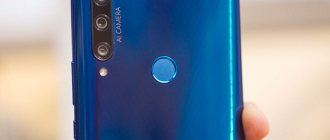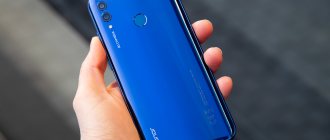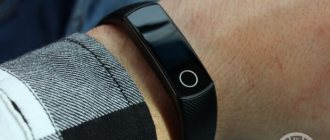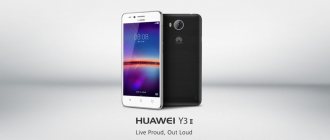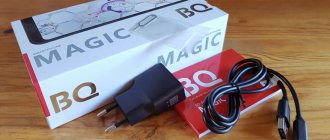Honor 10 was traditionally announced twice - first in China, on April 15, and then in London, on May 15. I already wrote about my first impressions of this smartphone - now it’s time to talk about it in more detail.
Conceptually, everything is exactly the same as in previous years: Honor 10 is a redesigned Huawei P20 with some differences. Previously, they consisted primarily of design and price. The situation with the price, of course, has not changed - Huawei P20 costs more than 40 thousand rubles, while Honor 10 costs 27 or 30 thousand, depending on the amount of memory. But the design is extremely close, but there are noticeable differences in the characteristics: a different fingerprint scanner, a slightly modified display, a new camera, the presence of a mini-jack and the lack of moisture protection. The most interesting thing is not the differences between different Huawei smartphones (the company’s policy is extremely simple and clear), but whether the new Honor is once again able to “take out” everyone in the smartphone market segment priced up to 30 thousand rubles.
Specifications
| Honor 10 | Honor 9 | Huawei P20 | Nokia 7 Plus | ASUS Zenfone 5 | |
| Display | 5.84 inches, IPS, 2280 × 1080 pixels, 432 ppi, capacitive multi-touch | 5.15 inches, IPS, 1920 × 1080 pixels, 423 ppi, capacitive multi-touch | 5.8 inches, IPS, 2244 × 1080 pixels, 430 ppi, capacitive multi-touch | 6 inches, IPS, 2160 × 1080 pixels, 401 ppi, capacitive multi-touch | 6.2 inches, IPS, 2246 × 1080 pixels, 402 ppi, capacitive multi-touch |
| Protective glass | Corning Gorilla Glass (version unknown) | No information | No information | Corning Gorilla Glass 3 | Corning Gorilla Glass (version unknown) |
| CPU | HiSilicon Kirin 970: four ARM Cortex A73 cores, 2.4 GHz + four ARM Cortex A53 cores, 1.8 GHz; HiAI architecture | HiSilicone Kirin 960 (four ARM Cortex-A73 cores, 2.4 GHz + four ARM Cortex-A53 cores, 1.8 GHz) | HiSilicon Kirin 970: four ARM Cortex A73 cores, 2.4 GHz + four ARM Cortex A53 cores, 1.8 GHz; HiAI architecture | Qualcomm Snapdragon 660 (eight Kryo 260 cores, 2.2 GHz) | Qualcomm Snapdragon 636 (eight Kryo 260 cores, 1.8 GHz) |
| Graphics controller | ARM Mali-G72 MP12, 850 MHz | ARM Mali-G71 MP8, 850 MHz | ARM Mali-G72 MP12, 850 MHz | Adreno 512, 850 MHz | Adreno 509, 720 MHz |
| RAM | 4 GB | 4 GB (6 GB version available) | 4 GB | 4 GB | 6 GB |
| Flash memory | 64/128 GB | 64 GB (there is a version with 128 GB) | 128 GB | 64 GB | 64 GB |
| Memory card support | No | Eat | No | Eat | Eat |
| Connectors | USB Type-C, 3.5 mm mini-jack | USB Type-C, 3.5 mm mini-jack | USB Type-C | USB Type-C, 3.5 mm mini-jack | USB Type-C, 3.5 mm mini-jack |
| SIM cards | Two nano-SIMs | Two nano-SIMs | Two nano-SIMs | Two nano-SIMs | Two nano-SIMs |
| Cellular connection 2G | GSM 850/900/1800/1900 MHz | GSM 850/900/1800/1900 MHz | GSM 850/900/1800/1900 MHz | GSM 850/900/1800/1900 MHz | GSM 850/900/1800/1900 MHz |
| Cellular 3G | HSDPA 850/900/1900/2100 MHz | HSDPA 850/900/1900/2100 MHz | HSDPA 850/900/1900/2100 MHz | HSDPA 850/900/1900/2100 MHz | HSDPA 850/900/1900/2100 MHz |
| Cellular 4G | LTE Cat. 13 (up to 400 Mbit/s), bands 1, 3, 5, 6, 7, 8, 19, 20, 38, 40, 41 | LTE Cat. 6 (300/50 Mbit/s): bands 1, 3, 5, 7, 8, 20, 38, 40, 41 | LTE Cat. 18 (up to 1200 Mbit/s), bands 1, 2, 3, 4, 5, 6, 7, 8, 9, 12, 17, 18, 19, 20, 26, 28, 32, 34, 38, 39, 40, 41 | LTE Cat. 6 (300/50 Mbit/s): bands 1, 3, 5, 7, 8, 20, 28, 38, 40, 41 | LTE Cat. 12 (up to 600 Mbit/s): ranges not specified |
| WiFi | 802.11a/b/g/n/ac | 802.11a/b/g/n/ac | 802.11a/b/g/n/ac | 802.11a/b/g/n/ac | 802.11a/b/g/n/ac |
| Bluetooth | 4.2 (aptX HD) | 4.2 | 4.2 | 5.0 | 5.0 |
| NFC | Eat | Eat | Eat | Eat | Eat |
| Navigation | GPS, A-GPS, GLONASS, BeiDou | GPS, A-GPS, GLONASS, BeiDou | GPS, A-GPS, GLONASS, BeiDou | GPS, A-GPS, GLONASS, BeiDou | GPS, A-GPS, GLONASS, BeiDou |
| Sensors | Light, proximity, accelerometer/gyroscope, magnetometer (digital compass), IR sensor | Light, proximity, accelerometer/gyroscope, magnetometer (digital compass), IR sensor | Light, proximity, accelerometer/gyroscope, magnetometer (digital compass), IR sensor | Illumination, proximity, accelerometer/gyroscope, magnetometer (digital compass) | Illumination, proximity, accelerometer/gyroscope, magnetometer (digital compass) |
| Fingerprint's scanner | Eat | Eat | Eat | Eat | Eat |
| Main camera | Dual module, 24 + 16 MP, ƒ/1.8, phase detection autofocus, LED flash | Dual module, 20 + 12 MP, ƒ/2.2, hybrid autofocus, dual LED flash | Dual module, 20 + 12 MP, ƒ/1.6 + ƒ/1.8, hybrid autofocus, optical stabilization, dual LED flash | Dual module, 12 MP, ƒ/1.75 + 13 MP, ƒ/2.6, phase detection autofocus, dual LED flash | Dual module, 12 MP, ƒ/1.8 + 8 MP, ƒ/2.0, phase detection autofocus, LED flash |
| Front-camera | 24 MP, ƒ/2.0, fixed focus, no flash | 8 MP, ƒ/2.4, fixed focus | 24 MP, ƒ/2.0, autofocus, no flash | 16 MP, ƒ/2.0, fixed focus | 8 MP, ƒ/2.0, fixed focus |
| Nutrition | Non-removable battery: 12.92 Wh (3400 mAh, 3.8 V) | Non-removable battery 12.16 Wh (3200 mAh, 3.8 V) | Non-removable battery: 12.92 Wh (3400 mAh, 3.8 V) | Non-removable 14.44 Wh battery (3800 mAh, 3.8 V) | Non-removable 12.54 Wh battery (3300 mAh, 3.8 V) |
| Size | 149.6 × 71.2 × 7.7 mm | 147.3 ×70.9 ×7.45 mm | 149.1 × 70.8 × 7.65 mm | 158.4 × 75.6 × 9.55 mm | 153 × 75.65 × 7.7 mm |
| Weight | 153 grams | 155 grams | 165 grams | 183 grams | 155 grams |
| Housing protection | No | Yes, IP67 standard | No | No | No |
| operating system | Android 8.1 Oreo, EMUI shell | Android 7.0 Nougat, own EMUI shell | Android 8.0 Oreo, EMUI shell | Android 8.1 Oreo (Android One) | Android 8.0 Oreo, ZenUI shell |
| Current price | 26,990 or 29,990 rubles depending on memory size | 19,950 or 25,990 rubles depending on memory size | 41,880 rubles | 27,990 rubles | 27,990 rubles |
| Honor 10 – information about the filling according to the CPU-Z application | ||||
Design
Honor 10 is an average flagship at an inexpensive price. Regarding the prices of top-end devices, of course.
The device combines all possible trends of modern smartphones. On the front it has a screen with a notch, like the iPhone X. On the back there is a glossy, very catchy cover, like the Huawei P20 Pro, which everyone is talking about. Our smartphone is thin, light, with a large screen, but at the same time fits perfectly in the hand and is pleasing to the eye.
Now in more detail.
If you are switching to Honor 10 from some two-year-old device, then the design will definitely suit you. The side frames will seem narrow, the display is hefty, the rich shimmer of the rear panel will shoot Cupid’s telltale arrow into your heart.
If you happen to try the iPhone X or any other modern device with a truly frameless design (or at least the Oppo F7), then you will be disappointed.
The side frames only seem narrow from a distance. In fact, they are never thin, and perhaps even thicker than other smartphones with a standard 16:9 screen.
Even in comparison with Huawei P20 Pro, the frames look noticeably wider.
The huge chin below also spoils the impression. Together with the on-screen keys, the lower space of this chin is almost 2 centimeters. It would have been possible to add system control gestures and hide these buttons, but this functionality was not delivered. Strange.
The upper part of the screen is occupied by the date, time, battery percentage and other service information, so it takes up a little more space from the declared diagonal. As a result, we get something completely different from the usable display area that was originally announced.
Unfortunately, the matter did not end there.
The system interface is not optimized for the screen frame at all.
Some information is constantly hidden by the top bar and side frames. Here's a good example of an Instagram story with the profile name half hidden. And you just have to come to terms with such inconveniences.
Some information is cut off
In all other respects, there is nothing to complain about the smartphone. It fits perfectly in any palm and can be easily operated with one hand. The Honor 10 feels a lot like the Samsung Galaxy S7. The same metal sides with a wave, neatly rounded corners and a glossy lid.
The only caveat is that the smartphone is still very slippery. In order not to accidentally introduce it to the asphalt, and then to the service center, it is better to put the gadget in a case. You can use the one that comes with the kit - silicone.
What is OTG
Thanks to OTG technology, you can connect various gadgets to your phone. On one side of the wire there is a regular USB port, on the other end there is a connector for micro USB or mini USB, which is equipped with modern smartphones.
Via a USB port, you can connect external drives, card readers, keyboards, game joysticks and many other gadgets to your phone. This is very convenient, since, for example, you do not need to connect a flash drive to your computer, transfer files to it, and then transfer them to your smartphone. OTG technology greatly simplifies this task. All you need to do is connect the flash drive to your phone and upload all the necessary files.
Why can’t manufacturers make a separate USB port on the phone body so that the connection can be made directly without adapters? The answer here is very simple, all modern phones have a minimum thickness. Manufacturers are trying to make gadgets as compact as possible, and an additional USB input will take up a lot of space. Another problem is the high energy consumption. Therefore, no manufacturer will make a built-in USB port on a smartphone. In addition, manufacturers receive additional money from the sale of accessories. This also includes the OTG cord, since in most cases users have to purchase it separately.
Fingerprint's scanner
I usually don’t write about this sensor, but I couldn’t pass it up here.
Below the screen is an ultrasonic fingerprint scanner. In this regard, there are two news: good and bad. Let's start with the first one.
The good news is that the scanner is flush with the protective glass. It is impossible to distinguish it by touch; you just need to place your finger in the center of the lower frame. It's cool and futuristic.
The second news (bad) is that by modern standards the scanner is very slow.
You place your finger on it, wait a second or a second and a half, and only then will the smartphone unlock. I quickly tapped the bottom frame and nothing happened - this is a normal situation. Recognition errors are also normal.
A separate adventure is to make a fingerprint into the device’s memory. It took me about two minutes, because the platform was extremely reluctant to recognize the papillary nodes on my finger.
In general, nothing new has happened - ultrasonic fingerprint recognition technology still works poorly. This happened in Xiaomi Mi 5S and other unsuccessful devices.
Xiaomi Mi 5S
There is an alternative - face unlocking. It works much better, but the reliability is not as high.
Show me your face
You won’t surprise anyone with facial recognition, but in Honor View 10 it happens instantly. Everyone said it was fast in the OnePlus 5T, but it's no slower here. When you pick up your smartphone from the table, it immediately scans your face, and those fractions of a second that are needed to pick it up comfortably are enough to unlock it and be ready for work. The fingerprint scanner is also fast, but in terms of convenience it is slightly worse than face scanning.
True, fast face recognition only works in good or normal lighting. In the dark there is no need to talk about its speed. There are delays and cases when a face is not recognized at all.
Display
Excellent IPS matrix with excellent color reproduction, viewing angles and brightness. With the exception of the irrational use of screen space, everything is fine with it.
Automatic brightness adjustment works adequately, the oleophobic coating is of high quality. By the way, by default the screen is wrapped in film from the factory. You don't have to take it off, it's very high quality and scratch-resistant. Within reasonable limits, of course.
Fans of the brand will note
Huawei and Honor smartphones traditionally have a very nice interface that is not overloaded with a large number of screens, notification centers and the like. If you don't like all this and you are closer to minimalism, then you will like it.
An interface based on Android 8 was built, which is gradually being received by more and more smartphones. The software shell, as expected from Honor, is EMUI. Here it is predictably the eighth version.
Despite the lack of monstrous add-ons, the smartphone can still pamper you with some interesting options.
I was very pleased with the intelligent screen rotation function, which rotates the screen only when the head is not tilted at the same time. This is very useful when you want to watch something while lying down. You won't have to turn on orientation lock every time.
There are a large number of screen temperature settings available for the screen, which is initially slightly adjusted towards warmer tones. If you don’t like this, then there are not only prepared presets, but also a scale on which you can choose your shade.
But the function of highlighting a screenshot with knuckles, which we are used to seeing in Huawei smartphones, is not implemented very well, as it does not work every time. Perhaps there is something wrong with my fingers, but everything worked fine for me on Huawei.
Characteristics of Honor 10 (model COL-L29A)
- IPS display 19:9, 5.84 inches diagonal, resolution 2280 x 1080 pixels, pixel density 432 ppi
- Kirin 970 processor with 8 cores (4x Cortex A73 2.36 GHz and A53 1.8 GHz), 10 nm
- video accelerator Mali-G72 MP12
- RAM 4 or 6 GB
- flash memory 64 or 128 GB (no memory cards)
- main cameras: 24 and 16 MP (f/1.8, focal length 27 mm, 4K recording)
- front camera 24 MP (f/2.0)
- battery 3,400 mAh (fast charging available - 50% in 30 minutes)
- OS Android 8.1.0 + EMUI 8.1 shell
- connectors: 3.5 mm audio port and USB Type-C 2.0
- sensors: accelerometer and gyroscope, light and distance sensor, compass, Hall sensor, fingerprint sensor
- networks: LTE Cat. 13 (up to 400 Mbps), Wi-Fi (802.11 ac, dual-band), Bluetooth 4.2 (aptX HD codec support), NFC, IR port, FM radio no
- two Nano SIM cards
- Navigation: Glonass, GPS, BeiDou
- Dimensions: 149.6 x 71.2 x 7.7 mm
- weight 153 g
- colors: black, grey, green and blue
Equipment
The Honor 10 smartphone comes to the buyer in a box made of white thick cardboard with the brand logo and model number 10 printed in thin lines. Inside, in separate compartments, there are:
- AC adapter for fast charging
- USB cable
- Protective bumper made of polyurethane
- Card slot eject tool
Performance
The processor is a self-produced Kirin 970 chip. The same “stone” was installed in Huawei Mate 10, Huawei P20 and its Pro version, as well as in Honor View 10. Within its own line of processors, this is the top-end and most productive chipset to date .
If we compare the Kirin 970 with current competitors, then it loses to them, and quite significantly.
For example, in the AnTuTu test, Qualcomm Snapdragon 845 now scores about 260 thousand points and above, while the 970th Kirin can boast a maximum of 205 thousand virtual parrots.
However, if this is critical for top-end devices that cost a lot of money (I’m talking about the Huawei P20 Pro), then for our hero it’s not at all. The smartphone costs 27 thousand rubles - almost half the price of its QS 845 counterparts. And it is quite acceptable for it to have not the fastest chipset in the world.
However, if synthetic tests are for geeks, then graphics concerns many. Hardcore gamers will be upset, because under the hood there is a Mali-G72 accelerator waiting for them, and it is noticeably weaker than the Adreno 630 and even the Adreno 540. The best proof of this is the behavior of the device in “Tanks”. The graphics frequency regularly drops to 35 frames per second at high settings, while the Adreno accelerator does not allow drops to 55 FPS.
Unfortunately, there is both throttling and heating. The first one is minor, you can live with it. But several AnTuTu tests in a row heated up the device to 52 degrees. A bit much.
Huawei P20 Pro (left) and Honor 10 (right)
If you don’t need top-end 3D toys, then the device will definitely not disappoint in everything else. Animation, speed, opening applications - everything just flies.
Screen
You can talk for a long time about the screen, but there is nothing truly outstanding about it. It is simply good and one of the best among IPS installed on flagships. Many people like these screens, because in the latest versions they look so good that they cannot be said to be inferior to OLED screens. It's just a matter of taste.
The screen resolution of Honor View 10 is 2160 by 1080 pixels with a diagonal of 5.99 inches. The pixel density is 403 ppi, but it can be reduced to reduce power consumption. And for convenience, you can set the screen to work with gloves. In this case, nothing supernatural happens, but simply increases sensitivity.
Front-camera
Excellent quality, detail, white balance, etc. You can safely post selfies from the front camera of Honor 10 on social networks - you definitely won’t be ashamed of them.
No background blur
Bokeh effect
There is also background blur, which generally works well. The main thing is that the background is not oversaturated with complex objects, patterns or the nightmare of algorithms - the carpet.
Sound
Special thanks to the company for not touching the 3.5 mm audio output. It is located here next to the USB Type-C port.
If anything, there is no moisture protection. In the current generation of flagships, it is present only in the older Huawei P20 Pro, even in the regular P20 it is not present.
In any case, the sound in the headphones is pleasing. There are all sorts of improvements, such as 3D audio. You can use them depending on your religion. Audiophiles will clearly be indignant. They have a 10-band equalizer in the standard media player.
There is only one external speaker here - the conversational speaker does not help it in any way, which means there is no stereo. But the speaker is very loud, you can hear a call or notification even on a busy highway. It’s just a pity that the quality has let us down a bit - it’s mediocre.
Honor 10 cannot boast of any extraordinary battery life. In my mode of use (using everything in the world except for games), the device lasted a maximum of one day: from 7 am to 9 pm. At the same time, the screen glow time did not exceed 3.5 hours.
SuperCharge fast charging is supported. I didn’t have a compatible power supply included, so I don’t have accurate data on this topic. Some bloggers on the Internet claim that a full charge takes “a little over an hour,” but this is hardly an objective test.
Battery and autonomy
Let's start with the main characteristic - the battery capacity is only 3400 mAh. If you distribute it to a bright widescreen screen (Full HD+) and fairly powerful hardware, the forecast will be disappointing.
You have to accept that the Honor 10 is a smartphone that, in most scenarios, will have to be charged every evening. This becomes clear after simple tests with active Wi-Fi, average volume and brightness:
- Hour of video watching on YouTube: 8-10%.
- Hour of playing PUBG on high settings: 20%.
- Hour in Google Chrome: 7-10%.
- Night in Do Not Disturb mode: 2-4%.
In general, consumption is standard and acceptable, but in games there is excessive gluttony. This problem is intended to be mitigated by the Honor SuperCharge fast charging technology, which is included in the kit. Using a proprietary power supply, the device is fully charged in about an hour and a half.
Bottom line
Honor 10, like any smartphone in general, has its drawbacks. In this case, it's a slow fingerprint scanner, poor gaming performance, and a system that's not optimized for its own screen. However, if you don't play games, they aren't that critical. Especially against the backdrop of the advantages of a smartphone.
Honor 10 boasts an excellent design and ergonomic body, great cameras, fast and trouble-free operation. But the most important thing is the price of Honor 10. In Russia it is 26,990 rubles. If you suddenly thought it was expensive, then here’s the price in Europe - 450 euros, or almost 33 thousand rubles in our money. As a rule, our manufacturers take the European price and add another 10 percent to it, resulting in the official price in Russia. And Honor and Huawei are the only manufacturers that do exactly the opposite. This is at least worthy of attention. However, like the Honor 10 smartphone itself.
Honor Honor 10 Huawei Huawei P20 Huawei P20 Pro
How to find out if Honor supports OTG function
Unfortunately, not all smartphones are able to support connection with other devices via an OTG cable. Devices with Android operating system version 2.3 and above are able to support this function. But even the latest phone models may not connect via OTG if the appropriate shell and software are not installed.
Budget options do not support connecting external devices via OTG. This is explained by the fact that the manufacturer is trying to save battery power. At the moment of connection, energy is consumed greatly. If you consider that external devices will consume a lot of charge, then this function will most likely turn out to be a disadvantage.
Any above-average smartphone has OTG support. Before you buy a new phone, you can look at the characteristics and make sure whether it has this technology.
There are several ways to check OTG support in your device.
- View the phone's specifications on the manufacturer's website.
- Open settings and see the Android version. If it is higher than 2.3, then your device supports the function 100%.
- You can download the USB OTG Checker application from Google Play. After launching the software, connect the otg cable to your smartphone; if your phone supports it, a message will appear on the screen.
Sometimes you may encounter this problem: when you connect a USB cable to your smartphone, nothing is displayed on the screen, the device is not displayed, and it does not see other gadgets. There is a way out of this situation.
- Enter your smartphone settings.
- Find the "System" button and click on it.
- At the bottom there will be an item “For Developers”, you need to select it.
- In this section, select “Always ask when connecting via USB.”


